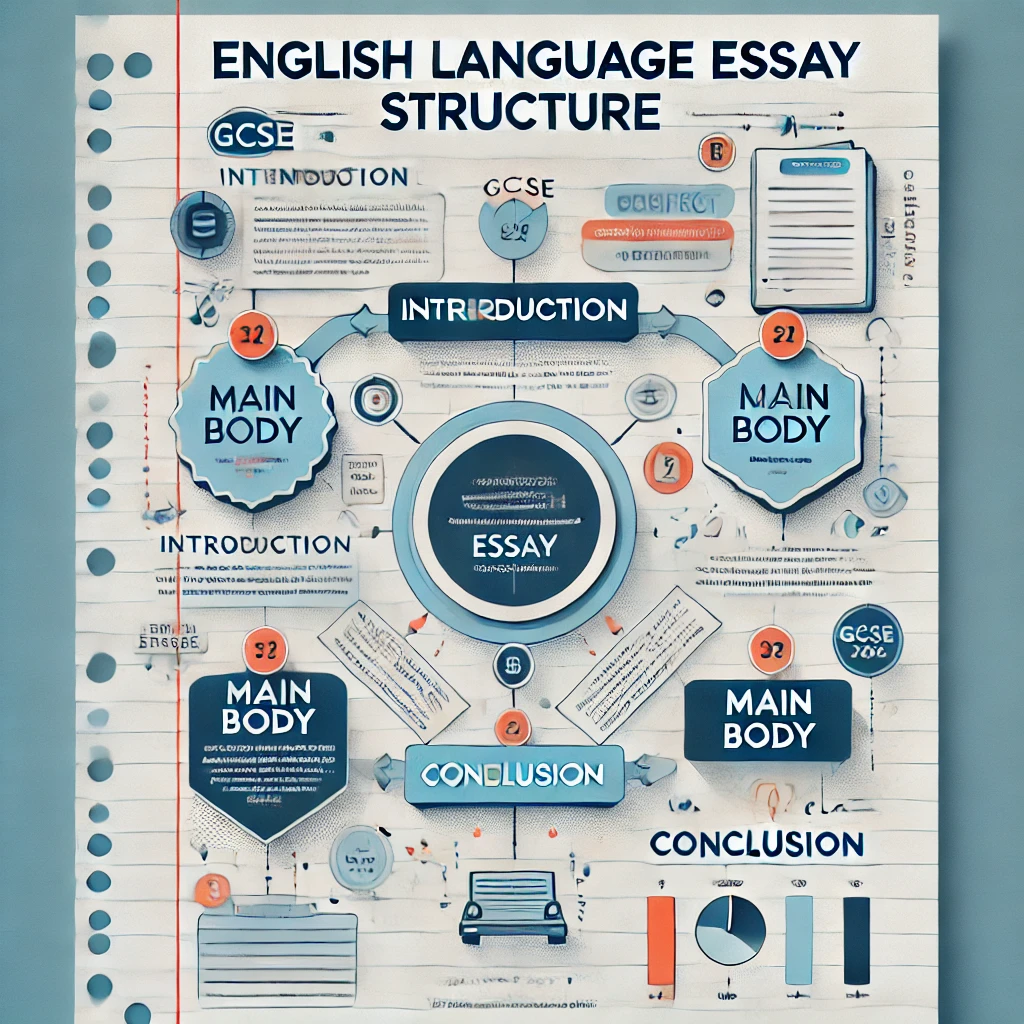A well-structured essay is key to success in GCSE English Language. Examiners look for clarity, coherence, and a logical flow of ideas. Follow this simple structure to ensure your essays impress.
1. Introduction: Set the Stage
Your introduction should be concise and engaging. Start with a clear thesis statement that outlines your argument or response to the question. Briefly mention the key points you will discuss.
Example:
“The theme of power in Animal Farm is explored through Orwell’s use of allegory, symbolism, and characterisation. This essay will examine how Napoleon’s rise to power reflects totalitarian regimes in history.”
2. Main Body: Develop Your Points
Each paragraph should focus on one key point, following the PEEL structure:
- Point – Make a clear argument.
- Evidence – Use a relevant quotation.
- Explain – Analyse the quotation and its effect.
- Link – Relate back to the question.
Example Paragraph:
Point: Orwell presents Napoleon as a ruthless dictator.
Evidence: “Napoleon is always right.”
Explain: This slogan mirrors propaganda techniques used by totalitarian leaders, reinforcing blind loyalty among the animals.
Link: This highlights Orwell’s critique of political manipulation.
3. Conclusion: Summarise Effectively
Your conclusion should restate your main argument in a fresh way. Avoid introducing new points but offer a final thought.
Example:
“Through Napoleon’s rule, Orwell warns against the dangers of unchecked power. The novel’s enduring relevance reminds readers of the importance of questioning authority.”
Final Tips for Success
- Use transition words like ‘furthermore’, ‘however’, and ‘therefore’ for smooth flow.
- Plan before writing to ensure clarity and structure.
- Practise writing timed essays to improve exam performance.
For more expert guidance on GCSE English Language, check out our comprehensive guide.
By mastering this essay structure, you’ll be well on your way to achieving top marks in your GCSE English Language exam. Start practising today!



Leave a Reply